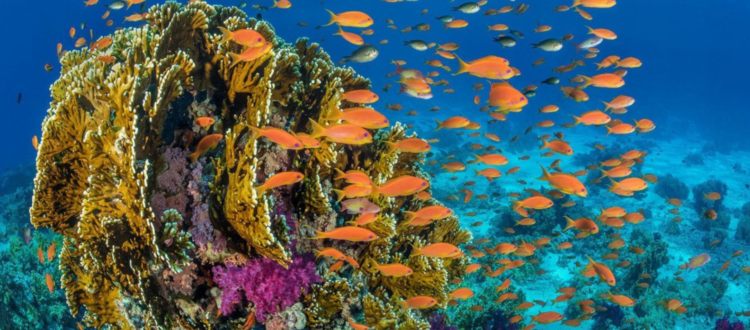COP15 – THE GLOBAL BIODIVERSITY AGREEMENT IS NOT READY, IT WILL BE RE-DISCUSSED IN JUNE
Interim negotiations ahead of COP15 on Biodiversity are coming to an end. After two and a half years of virtual discussions, the Convention on Biological Diversity (CBD) resumed negotiations in person. The delegates’ task was significant: to prepare the groundwork for the fifteenth meeting of the Conference of the Parties (COP 15) to adopt the post-2020 Global Biodiversity Framework (GBF) in Kunming, China, later this year.
Although there has been progress on the GBF text, negotiations have progressed too slowly, and delegates have decided to schedule an additional negotiating session before COP15, which will be held in Nairobi from June 21-26, 2022.
In the final days of negotiations in Geneva, delegates decided to dedicate the remaining time and energy to the text of the Post 2020 Global Biodiversity Framework (GBF), what many consider as the Paris Agreement for biodiversity. This implicates that less time was dedicated to other items on the agenda, such as the negotiation on marine and coastal biodiversity, which was interrupted and it will have to be concluded at COP15. During the negotiations, Switzerland urged delegates to close the discussion on marine and coastal biodiversity protection and to focus on issues directly related to the GBF, supported by China, which asked to focus on the main agreement. Several delegates stressed that this situation should not set a precedent and Morocco warned that the COP15 agenda will be overloaded, while nevertheless accepting the proposal given the exceptional circumstances.
Switzerland’s proposal was granted, creating an unusual situation in which a non- negotiated documents and the list of comments of the Parties will be sent directly to COP15. The reason for this choice is that the protection of marine and coastal biodiversity is not directly addressed within the GBF. However, the oceans cover 70% of our planet and deep-seabed habitats host between 500,000 and 10 million species. This raises the question of why the topic is not directly addressed within the text of the agreement.
Regarding the GBF, after the first week of discussions got lost in the details, going so deep for each goal and target that it was difficult to keep track of the big picture – as we reported here –, the text remains with too many options in brackets and many alternative proposals.
Source: draft text of the Global Biodiversity Framework
Goal A is composed of three elements:
- On ecosystem integrity, disagreements remain over whether ecosystem “resilience” should be considered, what percentage of integrity should be ensured by 2030 and 2050, and the range of ecosystems considered.
- On extinction, disagreements are on whether to “halt” or “minimize” extinction rates, and how to consider progress on increasing populations of depleted species.
- On diversity, the brackets are on whether to “maintain” or “safeguard” species, and whether protection of genetic diversity should have a numerical goal; proposals in the text are “at least 90%,” “at least 95%,” or another percentage to be defined.
Regarding Goal B, two alternative targets are presented: one on enhancing, improving, and maintaining nature’s contributions to people through conservation, restoration, and sustainable use; and the other on sustainable use and management of biodiversity, achieving sustainable development, and achieving a reduced ecological footprint. Both include parenthetical text on the right to a clean, healthy and sustainable environment.
The European Union has proposed to give a target to reduce the ecological footprint by 50% by 2030 and to keep the ecological footprint within planetary boundaries by 2050.
One of the most debated issues is finance for the protection of biodiversity (Goal D): there are still major disagreements on how to align national and international public and private financial flows and there is no agreement on the amount of fund for the protection of biodiversity to be allocated by 2030 and by 2050 (the text does not include a numerical target). There is not even an agreement on the wording: there are currently four different versions of the goals on the table.
Negotiations are also progressing on the 21 targets, but strong disagreements remain on objectives related to species recovery and conservation, ensuring that areas are subject to integrated spatial planning that takes into account biodiversity, the role of business and financial institutions, sustainable consumption issues, whether to monitor the impacts of biotechnology, and whether to phase out subsidies harmful to biodiversity.
Delegates at a negotiating session in Geneva; source: IISD
Another important issue is the mechanism for reviewing and updating National Biodiversity Strategy & Action Plans (or NBSAPs).
The Convention on Biological Diversity (CBD) in Article 6(a) states that each Party must prepare a National Biodiversity Strategy and Action Plan (NBSAP) or equivalent instrument. This creates an obligation for Parties to carry out national biodiversity planning, setting out a course of action with specific targets and plans to achieve the objectives of the Convention.
In this context, NBSAPs are considered one of the strongest implementation mechanisms of the Convention on Biodiversity; representing a tool similar to the National Determined Contributions (or NDCs) for the United Nations Framework Convention for Climate Change.
In Geneva there was a debate on when the new NBSAPs should be updated in light of the new post-2020 global framework for biodiversity. There is still no agreement on whether NBSAPs should be updated by COP16.
Regarding the review of the progress and ambitions of NBSAPs, there was some debate on whether to require a review in 2025 and whether to make such a review voluntary, as suggested by the EU and China.
As Elizabeth Mrema, Executive Secretary of the Convention on Biodiversity, reminded us, “the planet will accept nothing less than a clear, ambitious and transformative agreement on biodiversity protection.” We wait to see if delegates in Nairobi will be able to eliminate some of the options still on the table and come up with a shared text to be adopted at COP15 later this year.
by Margherita Barbieri, volunteer of Italian Climate Network

